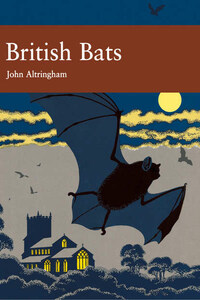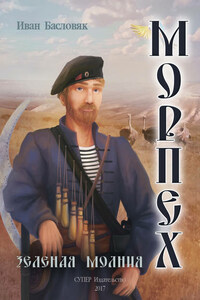The New Naturalist
BRITISH BATS
John D. Altringham
With 8 color plates and over 120 black
and white photographs and line drawings
Sarah A. Corbet ScD
S.M.Walters, ScD, VMH
Prof. Richard West, ScD, FRS, FGS
David Streeter, FIBiol
Derek A. Ratcliffe
The aim of this series is to interest the general reader in the wildlife of Britain by recapturing the enquiring spirit of the old naturalists. The editors believe that the natural pride of the British public in the native flora and fauna, to which must be added concern for their conservation, is best fostered by maintaining a high standard of accuracy combined with clarity of exposition in presenting the results of modern scientific research.
Cover
Title Page
Editors
Editorsâ Preface
Authorâs Foreword and Acknowledgements
1 FROM DARK OBSCURITY
2 BATS, AN EVOLUTIONARY SUCCESS STORY
3 THE BIOLOGY OF TEMPERATE BATS
4 AN ECOLOGICAL SYNTHESIS
5 BRITISH BATS, PAST AND PRESENT
6 CONSERVATION
7 WATCHING AND STUDYING BRITISH BATS
APPENDIXIDENTIFICATION: HOW TO IDENTIFY A BAT IN THE HAND
Keep Reading
Glossary
Bibliography
Index
Colour Plates
Copyright
About the Publisher
Britain now has fewer than 50 species of truly native land mammals and of these more than a third are bats. Given the important place that they occupy in our fauna it might be thought surprising that the New Naturalist series has not produced a volume on bats long before this. In fact the editorial archive reveals that the subject of a bat volume was first discussed in 1959. Ten years later the idea was still on the table when it was concluded that there was insufficient demand to proceed with the project! The last two decades have witnessed a huge increase in interest in our bats fuelled by a combination of academic research and the activities of organisations such as the Bat Conservation Trust and local bat groups. So it is with an unusually high sense of satisfaction that the Editors welcome this addition to the New Naturalist library, some 43 years after it was first mooted and during which time four new species of bats have been added to the British fauna!
Bats have not always been held in a particularly high regard in the popular imagination, being associated with witches and vampires and the forces of darkness. However, this is but one of many aspects of bat lore where all is not what it seems. Most naturalists will know that our commonest bat by a long way is the pipistrelle. Yet even this apparently secure piece of natural history now has to be revised as modern techniques of ultrasound recording have revealed that where there was one there are now two species.
Bats are unique among mammals in the evolution of powered flight and this, together with their possession of a highly developed system of echolocation by which they navigate and capture their prey, serves to further increase their fascination. We were particularly fortunate to find the ideal author to bring to life and explain these special areas of bat biology and to bring us up to date with the most recent ideas. John Altringham is Professor of Biomechanics in the School of Biology at the University of Leeds. He is a distinguished authority on the mechanics of animal locomotion which he combines with a particular interest in the biology and natural history of bats. A particular feature of the book is his discussion of bat communities and the ways in which the different species interact. This approach is of critical importance for those concerned with habitat management for bats.
The final chapters of the book give a wealth of advice on how to develop and further an interest in these remarkable creatures. Detailed accounts of all of the British species are followed by hints on practical projects, equipment, conservation and identification, and the law. Throughout, the book is enriched by Tom McOwatâs superb illustrations and Frank Greenawayâs stunning photography.
I was surprised and delighted to be asked to write this book, being well aware of the long tradition behind the New Naturalist titles. Despite this long tradition, the New Naturalists is a very diverse series, so I did not feel bound by convention to a particular style or format. How then would I write this book? As a research scientist I am trained to ask questions and to attempt to explain what I see. I want to understand how and why the natural world works as it does, fitting my observations into a scientifically robust evolutionary framework. My aim has therefore been to describe the fascinating natural history of bats, but to do so in a functional and evolutionary context. This has meant introducing some concepts and processes that may not be familiar to all amateur natural historians. However, I believe this approach helps to bring meaning to natural history, making it more interesting and cohesive. Potentially unfamiliar concepts and terms are explained as they are introduced and I have also provided a glossary at the end of the book. My hope is that this investigative approach will be taken up by the more active bat naturalists. To this end I have made some suggestions for research that amateurs can tackle. I have also discussed equipment and techniques in some detail. However, first and foremost, this is a book about the natural history of British bats, a New Naturalist title that is long overdue, given the prominent place bats have in our native fauna. I only hope that my efforts have done the subject justice.








